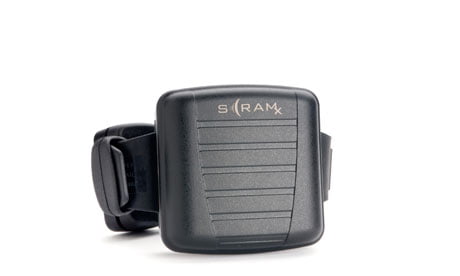What is a sobriety tag?
A sobriety tag is the tabloid short-hand for the Alcohol Abstinence Monitoring Requirement (AAMR). This new sentencing power was introduced as part of the Legal Aid, Sentencing and Punishment of Offenders (LASPO) Act 2012 and allows courts to impose a requirement that an offender abstain from alcohol for a fixed time period of up to 120 days and be regularly tested, via a transdermal alcohol monitoring device in the form of a ‘tag’ fitted around the ankle, as part of a Community or Suspended Sentence Order. The tag takes 45-48 readings per day of the wearer’s alcohol use.

Boris Johnson, in his role of Mayor of London, has recently (23 February 2016) announced that the tags will be rolled out across London following a successful pilot in four boroughs (Croydon, Lambeth, Southwark & Sutton).
This post provides further details based on the report of those pilots.
The pilot
The aims of the pilot were:
- To test how widely courts use the AAMR, and the technical processes within the criminal justice system.
- To evidence compliance rates with the AAMR.
- To evidence the effectiveness of ‘transdermal tags’ in monitoring alcohol abstinence.
Over the 12 month pilot period (July 14-July 15), 113 AAMRs were imposed with an average length of 75 days. AAMRs were given for a range of crime types most commonly in relation to violence or drink driving related offences. Almost three quarters (73%, n=82) of AAMRs originated
from Croydon Magistrates’ or Crown Court.
The results
The AAMR had a compliance rate of 92% over the pilot period, based on the number of cases returned to court and convicted of breaching their AAMR (n=9/113). Of these nine cases, five had their AAMR revoked and therefore failed to complete. The remaining four subsequently went on to complete their AAMR following their return to court.
cases returned to court and convicted of breaching their AAMR (n=9/113). Of these nine cases, five had their AAMR revoked and therefore failed to complete. The remaining four subsequently went on to complete their AAMR following their return to court.
The report notes that current compliance with the AAMR appears higher than for some other orders, however direct ‘like-for-like’ comparisons should be treated with caution due to varying offence types, offender characteristics, processes of dealing with breach, and lengths of orders.
This warning should definitely be heeded as the tags were made on low risk offenders with an average Offender Group Reconviction Scale version 3 (OGRS3) 2 year score of 35%. In other words, 35% of this group were likely to be reconvicted in the two years following their last offence.
Practitioner views
The report authors — Melissa Pepper and Dr. Paul Dawson from the Mayor’s Office for Policing and Crime (MOPAC) — reported that the AAMR was largely welcomed by respondents as ‘another tool in the box’ of community sentences, offering an innovative and tailored response to alcohol related offending, and filling a gap in sentencing for alcohol related offences committed by non-dependent offenders.
There were some reservations around narrow pilot eligibility criteria for offenders to receive the AAMR, and the requirement for total abstinence in certain cases.
However, interviewees felt that a period of abstinence on the AAMR had the potential to give offenders a ‘pause’ in drinking, time to reflect on alcohol consumption and its impact on offending behaviour, relationships and work, and an opportunity to break the cycle of routine drinking.
Some probation (both NPS and CRC) interviewees gave examples of how they had tailored products around the AAMR to support offenders further and use the opportunity as a ‘teachable moment’, including letters sent at the end of the AAMR and literature/advice around alcohol consumption going forward.
Whilst the AAMR was considered to be a punitive response for the purposes of the pilot, these possible rehabilitative elements were highlighted by some NPS/CRC and judiciary interviewees as a welcome unintended consequence. Offenders surveyed were largely unhappy about the appearance and ‘wearability’ of the tag, however overall they were positive they could complete the order.
Conclusion
This is a very small scale pilot and the authors acknowledged that the viability of AAMRs needs to be tested further, as, presumably, it will be via the roll-out of the scheme across London.
Although I can see there is some value in these sobriety bracelets as a form of external motivation for those who would benefit from reducing their alcohol-intake and related criminal behaviour, the measure seems rather cumbersome and heavy-handed, especially for drink drivers who made up over a quarter (37 = 29%) of this first batch of orders.




2 Responses
Hi Russell
Did the pilot include any unit costs for this disposal ? Seems particularly important if we are spending finite money on people at low risk of reoffending. –
Hi Maxine
No costings as far as I remember…